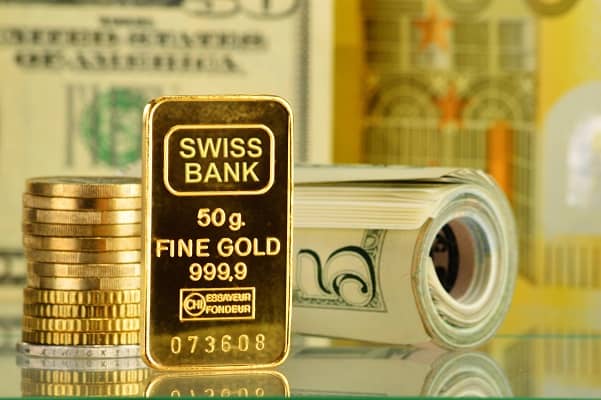Gold (XAU/USD) prices have dropped sharply today, falling below $2400 to reach $2376 at the time of writing.
The precious metal has faced significant selling pressure as profit-taking begins in an attempt to recover its all-time highs above $2480.
The overall outlook for gold remains strong, especially with U.S. bond yields hitting their lowest levels of the year.
U.S. 10-year Treasury yields have fallen to 3.67%, with increasing expectations of a Federal Reserve rate cut in September. I believe lower yields on interest-bearing assets reduce the opportunity cost of holding non-yielding investments like gold.
Additionally, the U.S. Dollar Index (DXY) has dropped to its lowest level since March, reaching 102.28 points.
Futures pricing data for the Federal Reserve’s 30-day funds indicate that traders see a realistic 50 basis point rate cut in September. The data also shows expectations for more than a 100 basis point reduction in the Fed’s key rates this year.
I believe that a series of weak U.S. economic data from last Friday has led markets to anticipate a faster pace of rate cuts. In my opinion, this signals a severe economic slowdown, raising doubts about whether the Fed can achieve a “soft landing”—a scenario where the central bank controls inflation without causing a recession.
I believe the Fed is now caught between continuing its battle with inflation and avoiding a severe economic downturn. The deterioration in labour market conditions and a sharp slowdown in the manufacturing sector are key factors driving expectations for faster rate cuts.
The July nonfarm payrolls report showed a significant slowdown in labour demand, with the unemployment rate unexpectedly rising to its highest level since November 2021, while inflation remains high. Now, the Fed faces a choice between cutting rates and risking rising inflation or keeping rates steady and leaving the economy in a recessionary state.
Job growth was at 114,000, far below the estimated 175,000 and June’s reading of 179,000. The unemployment rate jumped to 4.3% compared to previous estimates and data of 4.1%. Meanwhile, manufacturing activity contracted more rapidly, according to the ISM Manufacturing PMI, falling to 46.8 in July.
Therefore, I believe gold prices will try to maintain their strength as the U.S. dollar and bond yields decline sharply. U.S. 10-year Treasury yields have fallen below 4.0% for the first time in six months. Lower yields on interest-bearing assets support the strength of non-yielding assets like gold, reducing the opportunity cost of holding them.
Despite sharp geopolitical tensions and growing concerns about a global economic slowdown, gold prices have experienced healthy profit-taking in the markets. The conflicts in the Middle East have escalated, with Hezbollah in Lebanon launching dozens of rockets at Israel in response to the assassination of Hamas leader Ismail Haniyeh in Tehran. Historically, geopolitical tensions increased gold’s appeal as a haven, but this time seems different.
In my view, the global demand environment has deteriorated due to rising interest rates by central banks. The world’s second-largest economy, China, is in a fragile economic state due to weak demand in both domestic and international markets. The Caixin Manufacturing PMI unexpectedly contracted to 49.8 in July. The Eurozone economy also faces similar issues in its largest countries. Now, the slowdown in U.S. economic growth has reignited recession fears.
In conclusion, markets will focus on the July U.S. ISM Services PMI numbers today. The report is expected to show a recovery in service sector activity to 51.0 after a contraction to 48.8 in the previous month. Investors will also monitor other service sector PMI indicators, such as prices paid and new orders, which reflect changes in input prices and future demand, respectively, to gauge the stability and reasonableness of interest rate expectations and future Fed policies.





Leave a Comment